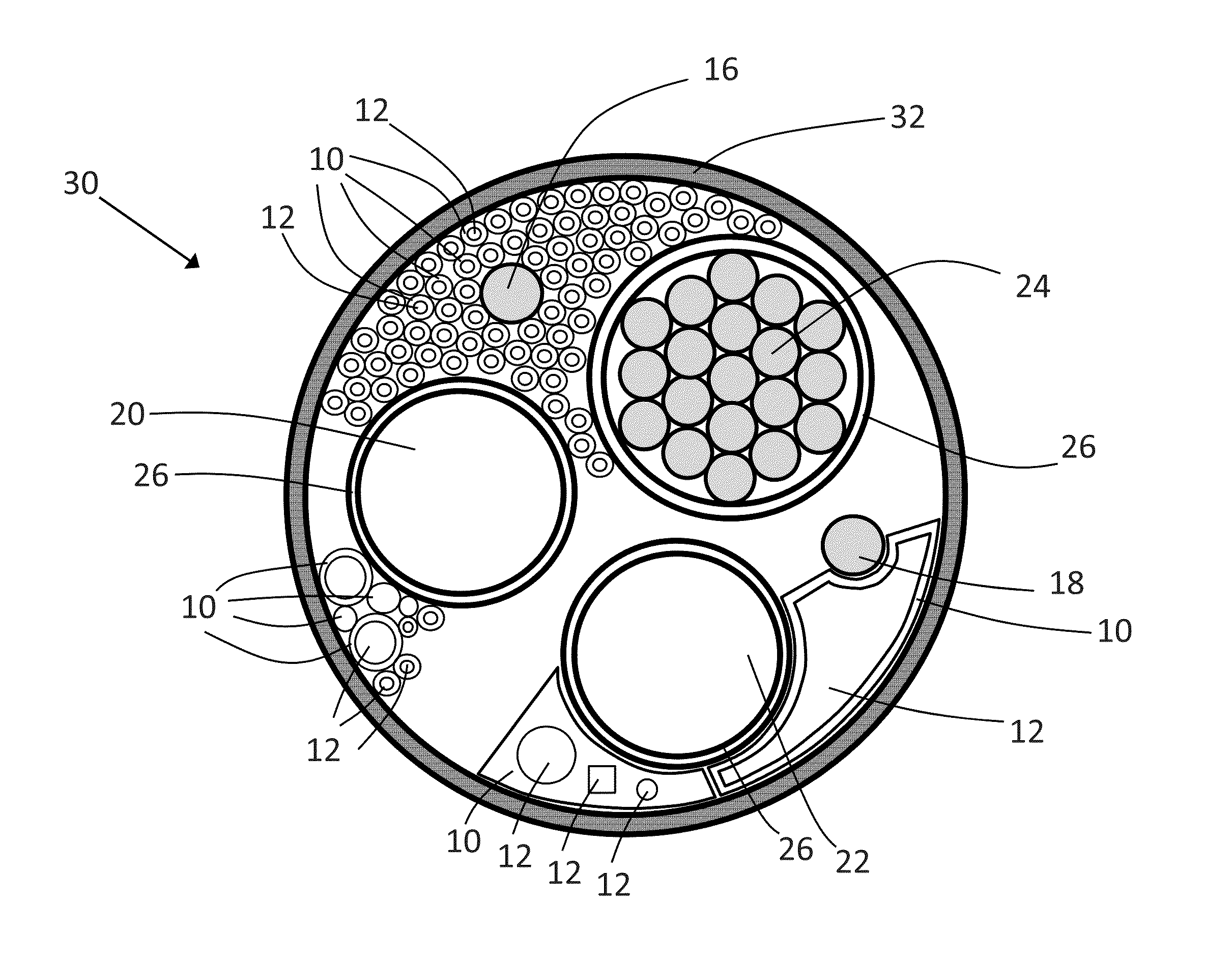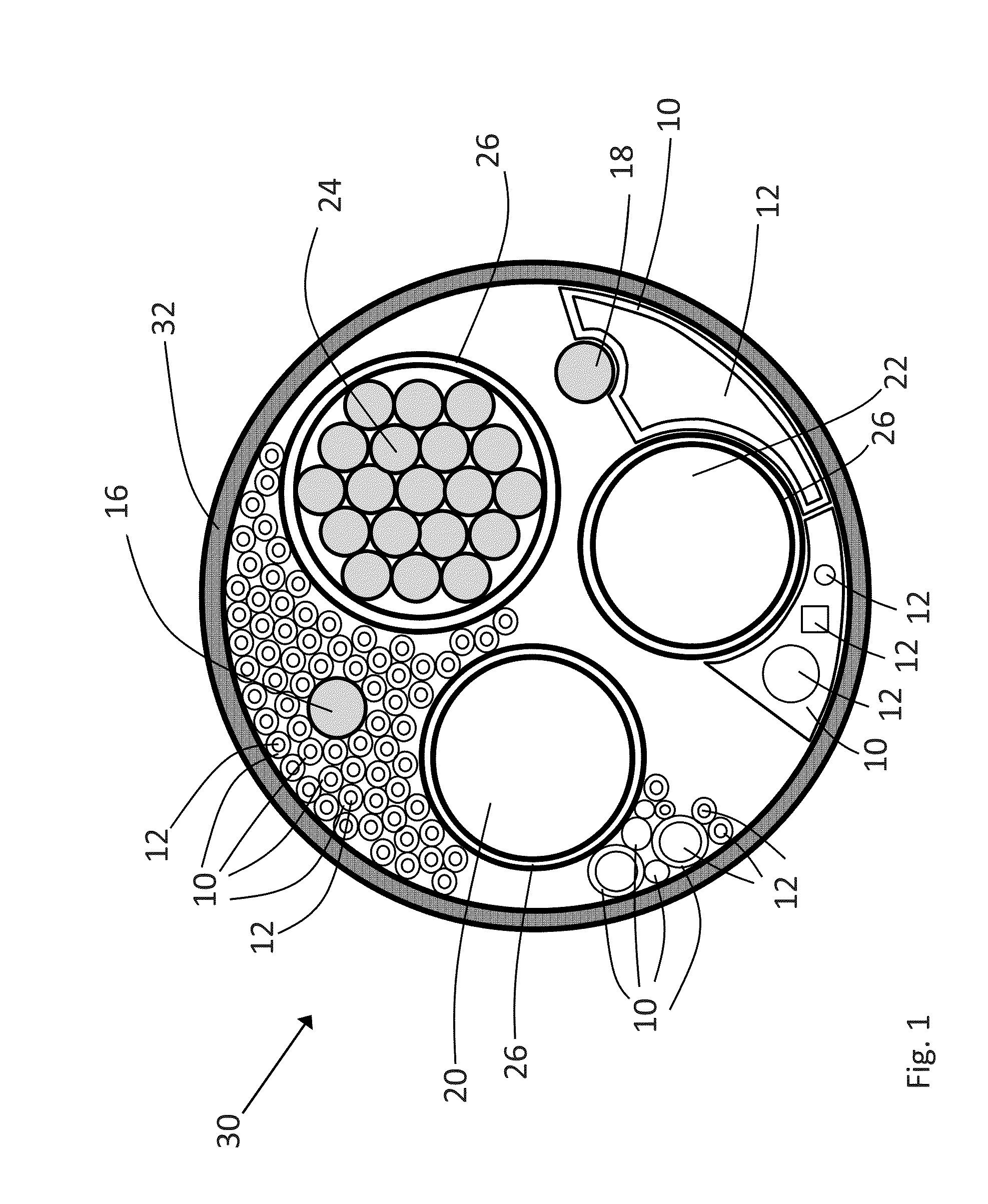Internal cooling of power cables and power umbilicals
- Summary
- Abstract
- Description
- Claims
- Application Information
AI Technical Summary
Benefits of technology
Problems solved by technology
Method used
Image
Examples
Embodiment Construction
[0032]The present invention will be discussed in further detail with reference to the enclosed drawings. It should be noted that the drawings illustrate a number of possible embodiments, but that the present invention may be utilized in a number of power cable designs including power umbilicals and that the drawings are only schematic illustrations showing examples of such cables.
[0033]FIG. 1 illustrates schematically a cross sectional view through an power umbilical cable 30 with an outer shell 32, and conductor elements 20, 22 and 24 arranged therein. The purpose of the conductor elements is to transfer electrical power. The conductor elements can be solid conductors or comprise a plurality of conductor elements 24 stranded together and surrounded by a sheet layer 26. The conductor elements 20 and 22 are similarly covered by a sheet layer 26. The number of conductor elements and the design of each of the elements can be freely selected based on the intended use of the power umbili...
PUM
 Login to View More
Login to View More Abstract
Description
Claims
Application Information
 Login to View More
Login to View More - R&D
- Intellectual Property
- Life Sciences
- Materials
- Tech Scout
- Unparalleled Data Quality
- Higher Quality Content
- 60% Fewer Hallucinations
Browse by: Latest US Patents, China's latest patents, Technical Efficacy Thesaurus, Application Domain, Technology Topic, Popular Technical Reports.
© 2025 PatSnap. All rights reserved.Legal|Privacy policy|Modern Slavery Act Transparency Statement|Sitemap|About US| Contact US: help@patsnap.com



